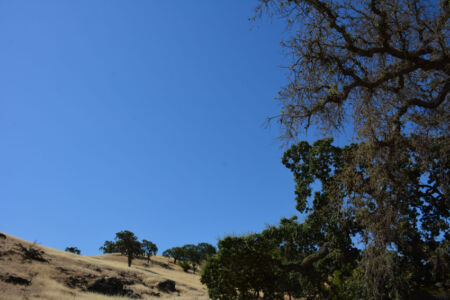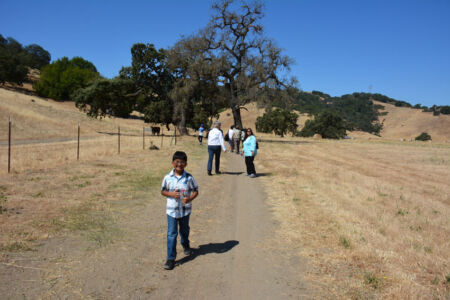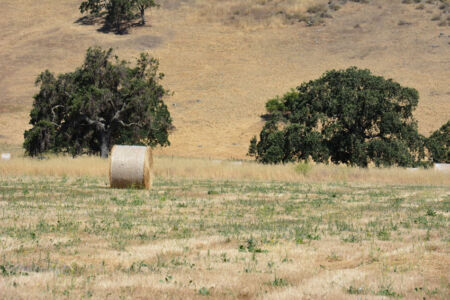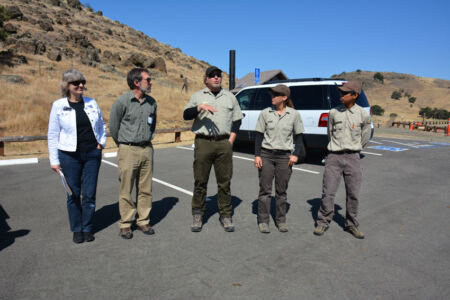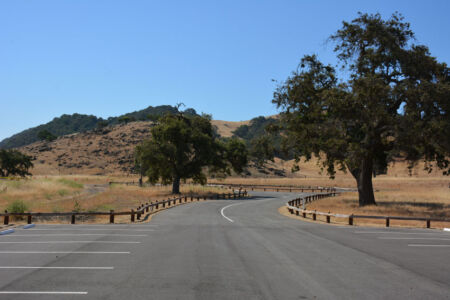WILDLIFE WITHIN SILICON VALLEY
Views of the Coyote Valley Open Space Preserve, opening June 27, in San Jose, Calif.
One bright spot amidst the closures and budget cutbacks hitting California’s State Parks is the opening of a new nature preserve in Santa Clara County. Called Coyote Valley Open Space, the preserve comprises some 348 acres of rolling hills, oak woodland and serpentine rock outcroppings. Its grand opening on June 27 highlights ambitious plans by the Santa Clara Open Space Authority (OSA) to acquire, preserve and restore the natural resources of Santa Clara Valley, writes Andrew Lam.
Despite $1 billion in overdue maintenance costs, state parks received a mere $20 million in this year’s budget. By contrast, the OSA, an independent special district which oversees 16,000 acres, is expanding, thanks in part to the passage of Measure Q last November, a $24 annual parcel tax that adds around $8 million per year to OSA’s operating budget over the next 15 years.
Measure Q funds – available as of January 2016 – will allow OSA to increase public access to open space, maintain parks and expand trail connections linking local and regional parks, says OSA General Manager Andrea MacKenzie. They will also enable OSA to protect water supplies and reduce pollution and toxins by preserving land around creeks, rivers and streams.
In 2010 OSA purchased Coyote Valley Open Space for some $3,481,000. Once a village and ceremonial site for the Ohlone people, the preserve is dotted with archeological sites that have been inhabited for over 6,000 years.
The Coyote Valley Preserve is “the jewel in the crown of Silicon Valley,” says Marc Landgraf, OSA’s external affairs manager. “Twenty minutes from downtown San Jose, you feel your blood pressure drop at the Coyote Valley.”
OSA plans call for connecting trails from the east with the west side of the valley, which is intersected by highway 101, preserving agricultural lands and creating a green belt around the urban area. At a time when natural habitats are compromised and wildlife populations are shrinking, this will allow animals like mountain lions, black-tailed deer, bobcats, tule elk, and coyotes to roam more freely, Landgraf notes.
OSA was founded in the nick of time by the city of San Jose and Santa Clara County, when a once sleepy region full of fruit orchards and farmlands had already begun its epic transformation to become the center of the high tech world. Fearing urban sprawl and overdevelopment, OSA was tasked with the mission of protecting the county’s future quality of life by preserving the environment.
OSA made its first major purchase of property in 1999 – 3207 acres on Palassou Ridge, east of Harvey Bear Ranch-Coyote Lake County Park. In May 2002 it dedicated its first trail to Sierra Vista Open Space Preserve above Alum Rock Park. Since then it has acquired some 16,000 acres, of which 7,000 are now open to the public.
At Coyote Valley Preserve there are at least 160 species of birds that biologists at nearby DeAnza College have observed, including rare or special status species. Lead Open Space Technician Megan Robinson says red-tailed hawks, turkey vultures, yellow bills magpies and golden eagles are regularly spotted in the valley.
“I grew up in San Jose, and I’m glad we managed to preserve all this space,” she says. “I want my children to be able to access nature and wildlife.”
Some major tech companies own lands in the valley – also home to Santa Clara County’s agricultural heritage – but have not yet decided whether to build on it.
“It would be tragic for nature and wildlife,” Robinson said, “if urban sprawl claims Coyote Valley.”
NAM editor Andrew Lam visited Coyote Valley Open Space as part of an OSA-funded project.




